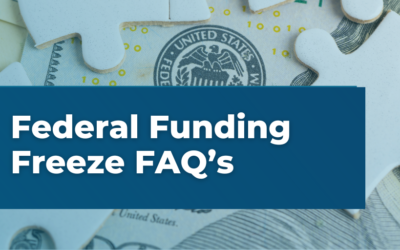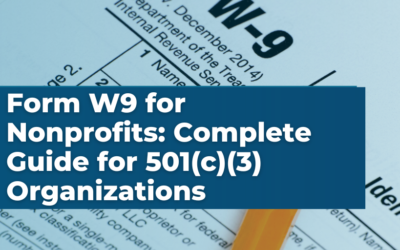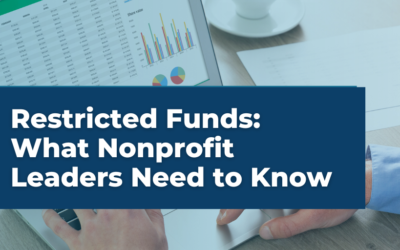What is an End of Year Fundraising Campaign?
End-of-year fundraising campaigns are more than just a last-minute rush to raise funds. They signify a crucial window of opportunity. The final months, especially December, witness a surge in philanthropy, with many individuals feeling more charitable during the festive season. This seasonality isn’t just anecdotal; studies consistently show that a significant portion of charitable donations is made in the last few weeks of the year. For many donors, it’s also a time to make charitable gifts for tax purposes before the year concludes.
An End of Year Fundraising Campaign is a strategic effort by nonprofits to capitalize on this increased inclination toward charitable acts. It involves a concentrated series of outreach and engagement activities, including special events, direct mail appeals, email campaigns, and more, all aimed at encouraging donors to contribute before the year ends.
Why the End of Year is Primetime for Fundraising
From a financial perspective, the influx of donations during this period can make or break a nonprofit’s budgetary goals. These funds often help bridge financial gaps, fund specific projects, or even set the tone for the following year’s operational scope.
Furthermore, given the spirit of generosity that pervades during this period, nonprofits also find it an opportune moment to attract new donors while re-engaging with previous ones. It’s a time when the message of their mission can resonate most powerfully, making a lasting impression that might translate into sustained support in the subsequent months and years.
In conclusion, the end-of-year fundraising campaign is not just about tapping into seasonal generosity; it’s a pivotal strategy that underpins a nonprofit’s financial health and its capacity to make a difference in the communities it serves.
Should a CPA be involved in your fundraising campaign?
The success of a fundraising campaign is not just determined by the amount of money raised but also by the trust it fosters among donors and stakeholders. As nonprofits strive to create a lasting impact with their campaigns, the role of a Certified Public Accountant (CPA) becomes paramount.
Importance of Financial Transparency in Fundraising
In today’s donor landscape, transparency isn’t just a good-to-have; it’s an imperative. Donors, more than ever, want assurance that their contributions are being used judiciously and for the intended purpose. Financial transparency builds and maintains donor trust, a critical component for nurturing long-term relationships and support. By being transparent, nonprofits not only validate the trust placed in them but also foster an environment where donors feel confident about their investment in the organization’s mission.
How a CPA Can Ensure Funds are Correctly Accounted for and Utilized
A Nonprofit CPA can provide a structured framework to ensure:
- Accurate Recording: Every dollar, whether big or small, is accounted for, ensuring accurate financial statements.
- Compliance with Regulations: They ensure funds are used in accordance with donor restrictions and that the nonprofit remains compliant with state and federal regulations.
- Risk Management: CPAs can identify and mitigate financial risks, ensuring long-term financial health and stability.
- Reporting: They facilitate clear and comprehensive financial reports, offering insights to both internal stakeholders and external donors.
Setting Realistic Fundraising Goals
While ambition drives nonprofits to set lofty fundraising targets, realism ensures sustainability. A CPA, with their analytical capabilities, can assess past financial data, current economic trends, and the nonprofit’s growth trajectory to recommend achievable fundraising goals. Their insights are grounded in numbers, ensuring that objectives are both ambitious and feasible.
Budgeting and Planning for the Campaign
Every successful campaign is backed by meticulous planning and budgeting. A nonprofit CPA can:
- Forecast Revenue: By analyzing past campaigns and industry trends, CPAs can predict potential income, aiding in setting realistic expectations.
- Allocate Resources: They can advise on how to effectively distribute funds for different campaign activities, ensuring maximum return on investment.
- Monitor Expenditures: Through ongoing budget tracking, CPAs can help nonprofits stay within their allocated budget, ensuring financial prudence.While passion and purpose drive nonprofits, it’s the structured financial approach, facilitated by a CPA, that ensures the fuel (funds) driving that purpose is managed optimally. Engaging a nonprofit CPA in your fundraising campaign isn’t just a good decision—it’s a strategic one.
What Strategies Can Ensure Proper Fund Allocation Post Campaign?
After the applause fades and the dust settles on a successful fundraising campaign, nonprofit organizations face the monumental task of allocating and managing the raised funds efficiently. This phase is crucial because proper fund allocation not only ensures the realization of the nonprofit’s objectives but also upholds its integrity and trustworthiness in the eyes of donors and stakeholders. Here are some strategies that can guide proper fund allocation:
Distinguishing Between Restricted and Unrestricted Funds
- Understand the Difference:
- Restricted Funds: These are donations given for a specific purpose or project, as dictated by the donor. They cannot be used for any other purpose without explicit permission.
- Unrestricted Funds: These are donations without any strings attached. They can be used at the organization’s discretion for any purpose that aligns with its mission.
- Maintain Separate Accounts: To avoid any mix-up, it’s advisable to have separate bank or accounting ledgers for restricted and unrestricted funds.
- Regular Audits: Periodic audits can ensure that funds are being used as intended, and there’s no accidental commingling of restricted and unrestricted funds.
Financial Reporting: How to Communicate the Use of Funds to Donors and Stakeholders
- Clarity and Transparency: Financial reports should be straightforward, avoiding jargon that might obscure understanding. The goal is to clearly show where every dollar went.
- Categorize Expenditures: Group expenses by project, department, or any other relevant category. This provides a snapshot of how funds are distributed across the organization’s various efforts.
- Highlight Achievements and Milestones: Along with financial data, include qualitative data or stories that showcase the impact of the funds. For instance, if a certain amount was allocated to an educational program, highlight the number of beneficiaries or any significant success stories.
- Use Visuals: Charts, graphs, and infographics can make financial data more digestible and engaging. A pie chart breaking down expenses or a bar graph showing funds raised versus funds utilized can provide quick insights.
- Make Reports Accessible: Consider different mediums to disseminate your financial reports. While detailed reports can be uploaded on your website, snippets or highlights can be shared via newsletters, social media, or donor communications.
- Engage in Open Conversations: Encourage stakeholders and donors to ask questions about the report. Consider hosting a webinar or a Q&A session post-campaign to discuss the financial report and address any queries.
In essence, proper fund allocation post-campaign goes beyond meticulous accounting; it’s about nurturing trust. By distinguishing between different fund types and communicating financial details transparently, nonprofits can fortify their relationship with their donor base, ensuring sustained support for their mission.
How Does Tax Compliance Factor into Your Fundraising Campaign?
In the realm of fundraising, there’s more than just the mission-driven passion and strategy. Woven into the fabric of every campaign is the critical element of tax compliance. Ensuring that tax-related matters are handled correctly is not just a legal necessity; it’s also a way to build and maintain trust with donors. Here’s how tax compliance into the equation:
Importance of Tax Receipts for Donors
- Building Trust: Providing timely and accurate tax receipts reflects an organization’s professionalism and commitment to transparency. It assures donors that their contributions are recognized and appreciated.
- Tax Deductions: For many donors, tax receipts are essential for claiming deductions on their income tax returns. The receipt serves as a proof of their charitable contribution.
- Detailed Information: A comprehensive tax receipt should include the donation amount, date, donor’s name, and a statement confirming that no goods or services were provided in exchange for the donation (if that’s the case).
Potential Tax Implications and Benefits of End-of-Year Donations
- Timeliness: Donations made at the end of the year can be claimed as deductions for that tax year. This can motivate potential donors to contribute during year-end fundraising campaigns.
- Maximizing Deductions: Some donors strategically make significant contributions at the end of the year to maximize their tax deductions, especially if they anticipate a higher taxable income.
- Gift Limits: It’s essential to note that there are limits to how much one can deduct in a tax year. For instance, donations exceeding a certain percentage of an individual’s adjusted gross income might not be fully deductible in that year, though there are carry-forward provisions.
Ensuring Compliance with All Relevant Tax Codes and Laws
- Stay Updated: Tax laws can change. Nonprofits should stay abreast of any revisions in federal, state, or local tax codes that might affect their fundraising activities.
- Documentation: Maintaining meticulous records of all donations, regardless of size, is crucial. This includes cash contributions, in-kind donations, and any other form of support.
- External Audit: Regularly having an external CPA or audit firm review the organization’s financials can identify potential compliance issues and provide an added layer of credibility.
- Educate Donors: While nonprofits shouldn’t provide tax advice, they can offer general information or resources that guide donors on tax implications related to their contributions. This can be done via newsletters, campaign literature, or the organization’s website.
In conclusion, while tax compliance might not be the most glamorous aspect of fundraising, it’s undeniably one of the most crucial. By integrating tax considerations into the campaign strategy, nonprofits not only safeguard themselves from potential legal pitfalls but also enhance their reputation and trustworthiness in the eyes of their supporters.
How Can a CPA Assist with Effective Donor Communication?
At the heart of every successful nonprofit-donor relationship lies effective communication. While passion and mission drive the cause, financial transparency and understanding cement trust. CPAs, often seen as number experts, can play an invaluable role in shaping donor communication, ensuring that fiscal data is not just relayed but resonates.
Crafting Financial Narratives: Turning Numbers into Impactful Stories
- Beyond the Balance Sheet: While financial statements provide a factual representation of an organization’s monetary health, they can be complex and alienating for some donors. A CPA can distill this intricate data, highlighting the most crucial elements that donors should be aware of.
- Storytelling through Numbers: A CPA can help craft compelling narratives that correlate donations to tangible impact. For instance, instead of merely stating that “$50,000 was spent on educational programs,” they might suggest framing it as “Your generous donations helped 200 students receive quality education, setting them on a path to a brighter future.”
- Visual Representations: Sometimes, a picture truly is worth a thousand words. With their in-depth understanding of financial data, CPAs can guide the creation of infographics, pie charts, or bar graphs that depict fiscal information in an easily digestible manner.
Demonstrating Fiscal Responsibility to Build Donor Trust
- Transparent Reporting: CPAs ensure that every cent donated is accounted for. By overseeing accurate financial reporting, they ensure donors have a clear view of how their contributions are used, bolstering their confidence in the organization.
- Highlighting Prudent Financial Management: A CPA can spotlight instances where the organization made savvy financial decisions—be it cost savings, efficient resource allocation, or smart investments. Such insights reassure donors that their contributions are not only valued but are also used judiciously.
- Addressing Concerns Proactively: If there are financial challenges or setbacks, a CPA can assist in framing these in honest, yet constructive ways. By addressing potential concerns head-on and outlining plans to overcome them, nonprofits can maintain trust and demonstrate commitment to fiscal responsibility.
- Engagement and Education: CPAs can engage in donor forums, webinars, or Q&A sessions, offering their expertise to answer any financial queries or concerns donors might have. This direct engagement underscores transparency and positions the nonprofit as an entity that values its donor community.
In conclusion, the marriage of numbers and narratives is potent. With the expertise of a CPA, nonprofits can ensure that their financial stories are not just told but felt, forging deeper, trust-based relationships with their donor base.
What Post-Campaign Analysis Should You Perform?
Once the curtain falls on a fundraising campaign, the work isn’t over. In many ways, it’s just beginning. A robust post-campaign analysis can provide invaluable insights that guide future strategies and strengthen donor relationships. Here are essential components of this analysis, particularly from a financial perspective:
Financial Review: Did You Meet Your Goals?
- Benchmarking Against Targets: Compare the funds raised against the set targets. Did you exceed, meet, or fall short of your financial goals? This basic comparison forms the foundation of your post-campaign review.
- Dissecting the Data: Beyond the total amount raised, delve deeper. Which donation tiers were most popular? Was there a spike in donations after a specific event or announcement? Such granular analysis can uncover patterns that inform future strategies.
Evaluating the Return on Investment (ROI) for Different Fundraising Strategies
- Cost vs. Benefit: For each fundraising activity (e.g., gala dinners, online campaigns, charity runs), calculate the ROI by comparing the costs involved in organizing and executing the activity against the funds raised.
- Non-Financial Returns: ROI isn’t just about money. For instance, an event might not have brought in significant funds but garnered substantial media attention or attracted influential supporters. Consider these intangible benefits in your evaluation.
- Strategy Efficiency: Some fundraising methods might yield a good return but demand immense resources, while others might be low-cost with moderate returns. Evaluating efficiency means looking beyond mere dollar amounts and considering time, effort, and other resources invested.
Recommendations for Future Campaigns Based on Financial Data
- Capitalizing on Successes: If certain strategies or events outperformed others significantly, consider making them central in future campaigns. For instance, if online crowdfunding had a remarkable ROI, perhaps it deserves more focus and resources next time.
- Learning from Shortfalls: If specific goals weren’t met, delve into the reasons. Was it an external factor like a sudden economic downturn, or something within the campaign’s control? Such introspection can guide tweaks and changes for subsequent campaigns.
- Budgeting and Forecasting: Use the financial data from the recent campaign to refine budgets for future ones. For instance, if the ROI on a particular channel was high, it might merit a bigger budget allocation in the next campaign.
- Feedback Loop with Donors: Consider sending out surveys or feedback forms to donors. Their input, combined with financial data, can offer a holistic view of what worked and what didn’t.
In essence, while the excitement of a fundraising campaign might be in the activities, events, and donor interactions, its lasting value is often found in the quiet reflection and analysis that follows. By meticulously reviewing financial data and drawing informed insights, nonprofits can ensure that each campaign is not just an end in itself but a stepping stone to greater success.
Conclusion
Every fundraising campaign is a tapestry of heartwarming stories, mission-driven passion, and meticulous numbers. While narratives tug at heartstrings, it’s the undeniable power of financial expertise that instills confidence and drives strategy. Successful fundraising campaigns are not just about showcasing impact; they’re also about the transparent accounting and financial decisions that reinforce every achievement. It’s here that a nonprofit CPA shines, not just as a guardian of accounts, but as an ambassador of trust. Through their rigorous practices, they ensure that every financial story is authentically told, honoring the trust of every stakeholder.
As you navigate the complexities of nonprofit fundraising, recognize the transformative impact a CPA can bring to your endeavors. Beyond ledgers and balance sheets, they hold the key to building stronger donor relationships and sculpting success stories that resonate deeply.





